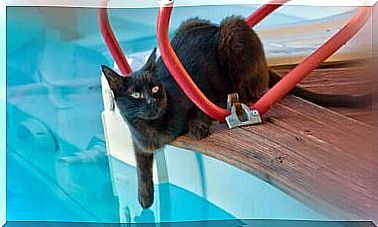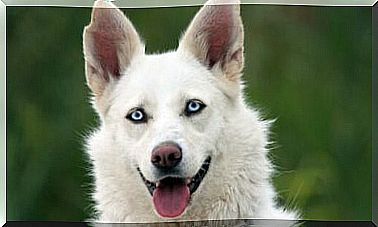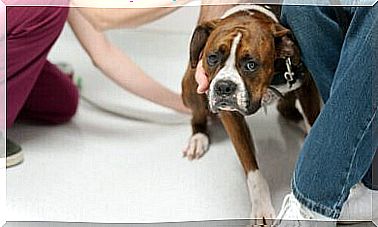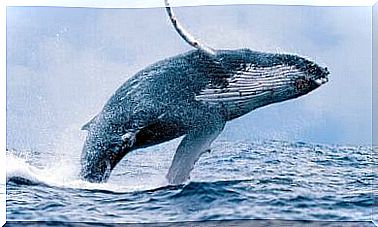Attachment In Rescued Animals
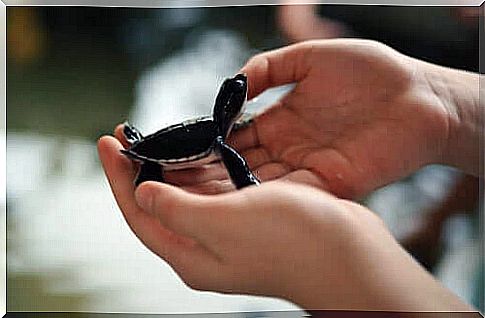
Attachment in rescued animals, known scientifically as imprinting , is one of the consequences that occur when saving wild individuals very young in the wild.
We’ll see more details about this interesting subject below.
Wildlife rescue is essential
If no action is taken when newborn birds or mammals are rescued – groups of animals in which imprinting occurs –, the moment they start to grow and acquire more autonomy, they will face the caregiver as a “mother”.

At the same time, the rescue of fauna, both wild and urban, is essential for the conservation of species. With this, not only is it possible to save the individual, but also very important data about the species itself are obtained. For example:
- Anatomical data.
- Geographic distribution.
- Migration routes.
- Main diseases.
- Potential dangers and threats to its conservation, etc.
Attachment is not an issue for rescued animals that cannot return to the wild and must remain in a wildlife conservation center. On the contrary, the development of a bond between the caregiver and non-recoverable animals facilitates the management and permanence of the individual at the center.
How do rescued animals get to the centers?
Each year, thousands of species arrive at wild animal recovery centers or service, assessment and rehabilitation centers. They can belong to any group of animals, from arthropods like spiders to mammals like bears.
The reasons why an animal might end up in such a center are varied:
- Animals injured by being run over, collisions with electrical networks or diseases that reduce mobility.
- Species seized at airports or other inspections, arising from illegal trafficking of species.
- Urban fauna (sparrows, swifts, blue tit…) rescued by citizens.
- Abandonment of exotic species by irresponsible guardians.
- Exotic species in the wild captured by forest agents or trained professionals.
So, as we can see, an animal can end up in a recovery center for several reasons. In most cases, they were mistreated by illegal species trafficking.
They usually come from other countries, making it virtually impossible to return them to their place of origin. Furthermore, they rarely survive the trip in poor conditions.
wildlife management
Often, animals belonging to invasive alien species – which have not arrived at the center for confiscation – are systematically sacrificed. This is done in this way where the legislation requires it. Furthermore, these animals represent a serious danger to native fauna and flora.
On the other hand, when species belonging to the native fauna arrive, normally another protocol is followed:
- If the animal is healthy and does not present any discomfort, it is returned to nature.
- Otherwise, if he has any pathology, trauma or if he is still very young, he will remain in the center until his full recovery and later release to the natural environment.
- If the arriving animal has some type of illness categorized as “unrecoverable”, it will remain at the center for the rest of its life. It is usually included in research programs such as captive breeding.
Attachment problems in rescued animals
On many occasions, the animals that arrive at the centers are usually puppies or very young individuals. They must be fed with a bottle (if they are mammals) or special baby food, according to the species (if they are birds).

In situations of this type, the ideal is to keep these animals with individuals of the same species and age, whenever possible. On the other hand, solid feeding should be started as soon as possible.
In addition, accommodation must be adequate and, when animals are old enough, they must move to weight cages (in the case of birds) or larger enclosures (in the case of mammals).
Likewise, animals need to learn to find food, especially carnivorous species, which will have to improve their hunting strategy in the center.
If this is not done this way or some other similar way, the rescued animals can not be released for several reasons:
- Chances are, they won’t be afraid of humans (which can put them in danger, as if a drug dealer approaches to capture and sell them, they won’t run away).
- They won’t know how to relate to their own species.
- They cannot be 100% rehabilitated.
- All the dedication of time, effort and financial resources will not have been worth it.




